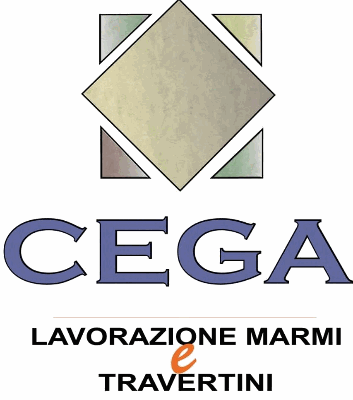LAPIS STONE PROCESSING
Lapis Stone in Tivoli
The History of the Lapis Stone
The Romans made Rome the most beautiful and richest city in the world, with stupendous buildings and decorations, both in terms of size and refinement. Unfortunately, it is difficult to understand through the remains how splendid Rome was. Every foreigner who came to Rome was amazed and ecstatic in front of such monumental beauty - even in today's civilisation that has come to produce skyscrapers, nothing would be compared to the beauty and grandeur of two thousand years ago. To decorate Rome, the Romans quarried huge quantities of marble throughout the empire, rationalised the exploitation of resources and industrialised the production of marble artefacts. They were also the first to use marble in slabs (opus sectile) for masonry applications (sectilia) for the simple reason that the Romans had invented the cement necessary to glue marble tables to walls or floors. Also, cut marble was easier to transport than whole blocks.
The ancient marbles used in the production of the floors were above all porphyry red, serpentine green, ancient yellow, white and pavonazzetto, to look like a gigantic carpet with geometric designs (as can still be seen in the Pantheon) or to form designs, varying the colours to obtain shaded tones from dark to light, leaving the first in the centre. The extensive use of marble began in the 1st century BC in Rome, on the order of Augustus, who had all public buildings erected or covered with marble. Marbles were imported from Spain, Gallie, Greece, Asia Minor, Egypt, Tripolitania, Numidia and Mauritania. In practice, there is no marble from the remotest locality of the empire that has not been used in Rome or of which some fragments have not been found in excavations. During the first century. the exploitation of the Luni quarries began (Luni marble, "Carrara marble" today), which represented a good substitute, with lower transport costs, for the white marbles imported from Greece. With the conquest of Egypt around 40 BC, the Romans brought Egyptian works and artifacts to Rome, including the obelisks of Trinità dei Monti and of San Giovanni in Laterano, 32m high, made of Sienite (alkaline granite). The extraction of granite, alabaster, porphyry and marble from Upper Egypt became so intense that Caesar created a tax, columnarium, for each column imported to Rome. Since then, over 50 varieties have been known and special piers have been set up along the banks of the Tiber for imports from all over the Empire.
Thus began the importation of Egyptian stones, whose quarries passed from the property of the Ptolemaic rulers to imperial property and which therefore were used only in the most important public monuments desired by the emperor (ancient red porphyry, various types of granite, basanite, various types of alabaster). The imperial ownership of the quarries ensured the availability of the necessary materials for the great public building programs, while what was left over was sold at a high price for private use. In particular, slabs for the cladding of interior walls and floors and column shafts in different-coloured marbles which enriched the interior spaces of public monuments and the richest houses, were widespread.
During the first century. the exploitation of the Luni quarries began (Luni marble, "Carrara marble" today), which represented a good substitute, with lower transport costs, for the white marbles imported from Greece. With the conquest of Egypt around 40 BC, the Romans brought Egyptian works and artifacts to Rome, including the obelisks of Trinità dei Monti and of San Giovanni in Laterano, 32m high, made of Sienite (alkaline granite). The extraction of granite, alabaster, porphyry and marble from Upper Egypt became so intense that Caesar created a tax, columnarium, for each column imported to Rome. Since then, over 50 varieties have been known and special piers have been set up along the banks of the Tiber for imports from all over the Empire. Thus began the importation of Egyptian stones, whose quarries passed from the property of the Ptolemaic rulers to imperial property and which therefore were used only in the most important public monuments desired by the emperor (ancient red porphyry, various types of granite, basanite, various types of alabaster). The imperial ownership of the quarries ensured the availability of the necessary materials for the great public building programs, while what was left over was sold at a high price for private use. In particular, slabs for the cladding of interior walls and floors and column shafts in different-coloured marbles which enriched the interior spaces of public monuments and the richest houses, were widespread.
Lapis characteristics
Lapis is a limestone with light beige subvoidal eyes with dimensions of a few centimetres and a yellow background, given by the millennial stratification and sedimentation of the sandy rock. The foundation is crossed by an irregular texture of intense yellow stiloliths.
Sawing:
When cutting blocks into slabs, it can be cut backwards and forwards, calling the material “LIGHT WAVE” with this cut.
Treatments:
Due to its geological finish, Lapis can be processed with: Resin - Sanding - Polishing - Brushing - Antiquing - Bush hammering - Cantilevered elements.
Main Interior Applications:
Due to its colouring and geological finish, it finds both commercial and domestic use inside homes such as: Flooring - Coverings - Washbasins and Bathtubs - Kitchen Shelves - Stairs.
Main Outdoor Applications:
Outside it is used for all uses - both private and public buildings, furniture and urban furniture.
CONSTANT TERRITORIAL EXPANSION
Cega is established throughout the Lazio and national territory thanks to the best wholesale supply of marble and the like. We are constantly expanding and evolving, including towards the emerging countries of the Middle East.
Enter your details below and we will contact you as soon as possible.













